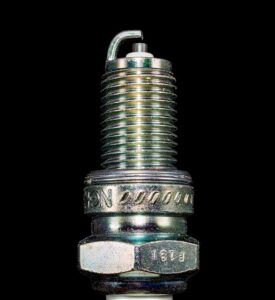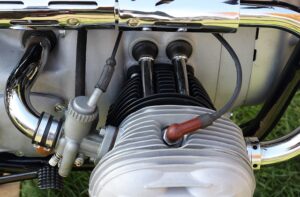
The Importance of Motorcycle Spark Plug Inspection and Replacement
We’ll explain how to inspect and replace spark plugs, discussing signs of wear and the impact of fresh plugs on combustion efficiency.
Introduction
Motorcycle maintenance is crucial to ensure optimal performance and longevity of your beloved two-wheeler.Among the various components that demand regular attention, spark plugs play a crucial role in igniting the fuel-air mixture in the engine. A well-maintained spark plug is essential for efficient combustion, fuel economy, and overall engine performance. This article will guide you through the process of inspecting and replacing motorcycle spark plugs, discussing signs of wear and the impact of fresh plugs on combustion efficiency. Inspecting and replacing your spark plugs is a simple task vital for the health of your ride.
The Basics of Spark Plugs
A spark plug is a small but critical component that ignites the air-fuel mixture in the engine’s combustion chamber, initiating the power stroke. Over time, spark plugs can accumulate carbon deposits, wear out, or become fouled, diminishing their effectiveness. Regular inspection and timely replacement are key to avoiding issues like poor fuel efficiency, difficulty starting, and decreased engine power.
Inspection
Visual Examination: Begin by inspecting the spark plug’s external condition. Look for any signs of fouling, such as black, oily deposits or excessive carbon buildup. A clean and dry appearance indicates a healthy spark plug.
Gap Check: Measure the spark plug gap using a feeler gauge. The correct gap is crucial for the spark plug to generate a strong spark. Consult your motorcycle’s manual for the recommended gap specifications.
Color Analysis: Examine the color of the insulator tip. A light tan or gray color indicates a proper air-fuel mixture, while black suggests a rich mixture and white signifies a lean mixture. Adjustments to the carburetor or fuel injection system may be necessary based on these observations.
Electrode Wear: Check the electrode for wear. Excessive wear may lead to inefficient combustion and reduced performance. If the electrode is eroded or rounded, replacement is recommended.
Change the Spark Plugs
- Replacement – Choose the Right Spark Plug: Refer to your motorcycle’s manual or consult with a professional to determine the correct type and heat range for your spark plugs. Using the wrong spark plug can lead to poor performance and potential engine damage.
- Prepare the Motorcycle: Ensure the motorcycle is cool before attempting to remove the spark plug. Remove the spark plug wire carefully, using insulated pliers if necessary.
- Removal: Use a spark plug socket to carefully remove the old spark plug. Inspect the threads for any signs of damage.
- Installation: Install the new spark plug by hand to avoid cross-threading. Once snug, use a torque wrench to tighten it to the manufacturer’s specifications.
- Reconnect the Spark Plug Wire: Ensure the spark plug wire is securely connected to the new spark plug.
Regular inspection and timely replacement of motorcycle spark plugs are integral to maintaining optimal engine performance. By incorporating this simple task into your routine maintenance schedule, you not only enhance fuel efficiency and power but also contribute to the longevity of your motorcycle. Remember, a small investment of time and effort in spark plug maintenance can go a long way in ensuring a smooth and enjoyable riding experience.





